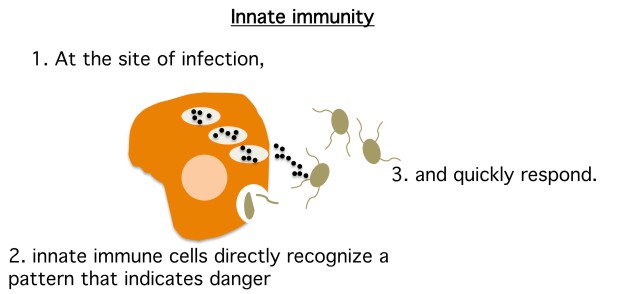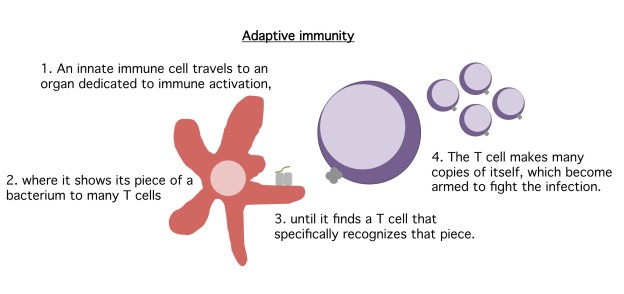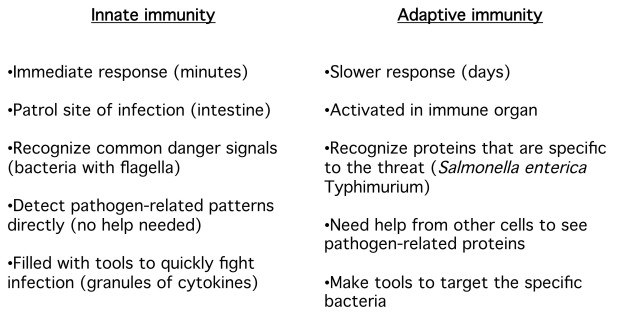In addition to falling into myeloid and lymphoid subdivisions, immune cells can also be classified based on how they function. The cells that act quickly in an immune response, using premade defenses, are part of the innate immune system. On the other hand, cells that respond more slowly and specifically are part of the adaptive immune system.
Innate immunity
Although myeloid and lymphoid cells make up the innate immune system, I’ll focus mostly on myeloid cells like neutrophils, macrophages, and dendritic cells.
Innate immune cells typically act at the site of infection. If you eat something that contains an intestinal pathogen or stomach bug, the innate cells in your gut will launch the first attack against it. Innate cells need to act fast, so they recognize patterns that are common among pathogens rather than pieces of specific bacteria or viruses. That means your innate cells will register “bacteria that use a whip-like structure to move around” rather than “Salmonella enterica Typhimurium.” That pattern recognition results in innate cells releasing their defenses against the bacteria, which are often ready-made and stored in pockets inside the cells.
This early defense mechanism is critical for keeping the vast majority of nasty stuff in check. But sometimes you need a more sophisticated approach.
Adaptive immunity
As an example of the lymphoid cells acting in adaptive immunity, I’ll focus on T cells.
Unlike neutrophils or macrophages, T cells cannot directly recognize pathogens. They need help from other cells in order to respond to a threat. An innate cell, often a dendritic cell, will become activated at the site of infection, then travel to an organ that specializes in immune activation. It will display parts of the bacteria on its surface and present them to a lot of T cells, along with additional information that specifies “Salmonella enterica Typhimurium.” Eventually it will find a T cell that recognizes the part of the bacteria, which will then make copies of itself and tools to fight against the infection. Finally the T cells will travel to the site of infection to fight the pathogen. As you can imagine, this takes considerably longer than the innate immune response.
Innate and adaptive immunity work together to keep us healthy. Before these systems get activated, however, there’s a first line of defense that pathogens have to make it through. Can you name it?


